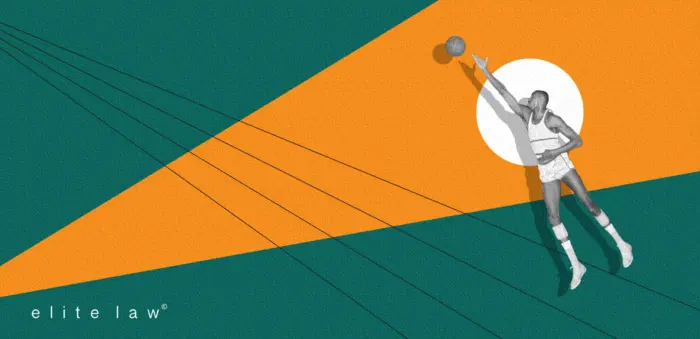Surfing made its debut as an Olympic discipline at the 2020 Tokyo Olympics. The competitions took place over three days, in front of Tsurigasaki beach in Chiba Prefecture, and the two golds up for grabs went respectively to Brazilian surfer Ítalo Ferreira and US surfer Carissa Moore, both competing in the shortboard speciality.
Good things do not come in two’s, they come in three’s
Following this debut, the IOC confirmed surfing as an Olympic discipline for the next Olympic Games in Paris in 2024 and Los Angeles in 2028.
For Paris 2024, the competitions will take place in Teahupo’o (Thaiti), a world-famous reef break, a legendary spot in the heart of French Polynesia.
As for Los Angeles 2028, rumours give as probable the choice of Trestles, in Southern California, considered by many to be the best spot in the world. The confirmation of surfing for the Los Angeles edition of the Games has already tickled the fancy of fans and insiders, since surfing is one of the most symbolic sports on the West Coast.
The presence of the discipline in three consecutive editions of the Olympic Games will also have a very practical effect: surfing will become a permanent Olympic sport, with very positive consequences in terms of visibility and turnover. In addition, work is already underway to include new events and disciplines, such as longboarding, which uses a board between 8 and 11 feet long (as opposed to the short board, which is about half as long).
Spectacular spots, expanses of coral reefs and tricks can make spectators dream. If one adds to this the global visibility guaranteed by the Olympic Games, one can understand why attention to surfing is growing exponentially.
A look at the organisation and rules
Surfing is governed by the International Surfing Association (“ISA“), a California non-profit public benefit corporation with members, founded in 1964 and based in California. ISA governs several disciplines and practices such as shortboarding, longboarding and bodyboarding, stand-up paddle racing, surfing, bodysurfing and wake surfing, as well as all other activities that involve riding waves or calm waters using dedicated surfing equipment.
It currently encompasses 109 national federations on five continents and more than thirty-five million practitioners. It is the only body recognised by the International Olympic Committee (“IOC”) as the world governing body for surfing.
The ISA organises the annual World Surfing Games, i.e., the ISA World Championships of Nations. Gold, silver, bronze and copper medals are awarded, and athletes compete for the honour of representing their country and national colours.
Interestingly, ISA recognizes the Court of Arbitration for Sport (TAS/CAS) as body to solve its disputes through its regulations containing arbitration clauses in favour of CAS especially for regulatory matters or in case of doping, when international-level athletes are involved.
The World Surf League (“WSL”), known before 2015 under the name of Association of Surfing Professionals, is a limited liability company based in California, statutorily recognised by the ISA, which coordinates the annual tour of professional surf competitions.
In particular, the WSL organises the World Championship Tour (“WCT”), which is the first/elite division of the professional surfing world championship. Only the 32 best men and 17 best women surfers in the world are qualified each season to compete in the ten or so stages of the circuit spread across the globe (Australia, Mexico, South Africa, Fiji, Tahiti, France, Spain, Brazil, Hawaii and the USA). The WTC competitions have the same 10,000 points and $100,000 prize money for both men and women.
To reach the surfing “paradise” of the WCT, surfers must pass through the Qualifying Series Tour (“QST”) a lower ranked gateway league to the elite, the second division so to speak, of the professional world surfing. In brief, it consists of about 50 men’s and 20 women’s competitions. It is open to all surfers with a WSL licence.
The collaboration ISA – WSL resulted in an agreement between the two entities to adopt a comprehensive anti-doping programme for the Tokyo Olympics. Unlike the ISA, but similar to other private leagues in different sports, the WSL was and is not a signatory to the World Anti-Doping Code, and such an agreement was thus a prerequisite for WSL surfers to be eligible for the Olympics.
The articulation and interweaving between the ISA and the WSL competitions were perfectly illustrated during the Tokyo Olympics where the places for surfers were divided amongst the top 10 men and top 8 women of the WCT, the competition organized by WSL, and the remaining places being were allocated to athletes qualified via the ISA’s competitions.
In view of the above, it follows that the organisation of world surfing is quite atypical, a hybrid model between an American approach characterised by closed and private leagues but with a European vision through a promotion and relegation system together with competitions between nations.
Secrets to keep
We like to end this post with a curiosity. Historically, the best spots have always been subject to a certain secrecy within the surfing community. It is an unwritten rule, aimed at avoiding the mass influx of too many surfers in the same place at the same time, which would make the experience more complicated for everyone.
Today, it is not easy to maintain confidentiality, given the myriad possibilities of transmitting content in real time. Videos, stories, photos and reels on Facebook and Instagram are a surfer’s cross and a surfer’s delight, because while they act as a sounding board for the discipline, they also trigger unpleasant ‘spot hunts’. There have even been cases of verbal aggression (even accompanied by property damage) against surfers who have spread ‘confidential’ images, as happened to a British photographer guilty of having portrayed the secret wave of Plymouth Sound in Cornwall.
Net of these exaggerations, we believe that the stable inclusion of surfing among the Olympic disciplines can only be good for the entire movement, multiplying the possibilities, including economic ones, linked to sponsorship contracts and the use of athletes’ images.


